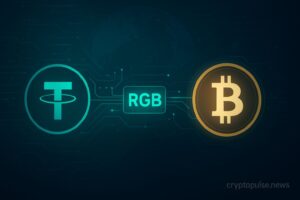Nasdaq Adds XRP to Crypto Settlement Index
Inclusion of XRP in Nasdaq’s index could pave the way for broader institutional adoption, pending SEC decisions.
The institutional landscape for digital assets is quietly shifting, as XRP has been officially added to the Nasdaq Crypto US Settlement Price Index, a benchmark closely watched by asset managers and ETF issuers. The move, disclosed in a recent U.S. Securities and Exchange Commission (SEC) filing by asset manager Hashdex, represents a potential milestone for XRP’s institutional legitimacy and may signal deeper changes ahead—if regulators cooperate.
XRP Joins Elite List of Digital Assets
On June 2, Nasdaq expanded the composition of its Crypto US Settlement Price Index, which originally included only Bitcoin (BTC) and Ethereum (ETH), to now also feature XRP, Cardano (ADA), Solana (SOL), and Stellar Lumens (XLM). The index is designed to reflect real-time settlement prices for select cryptocurrencies, offering institutional investors a standardized benchmark for price discovery and portfolio tracking.
The timing of the update was confirmed through a June 6 SEC filing by Hashdex, whose Nasdaq Crypto Index US ETF (NCIQ) tracks this very benchmark. Although the ETF currently offers market-cap weighted exposure to BTC and ETH, the inclusion of XRP and other tokens introduces complications under the current regulatory environment.
Regulatory Constraints Create Tracking Risks
Despite the expanded index, the NCIQ ETF remains restricted to holding only BTC and ETH. This creates a gap between the index and the ETF’s actual holdings—known as tracking error.
“Under current regulatory restrictions, the Trust is only permitted to hold bitcoin and ether, and is not permitted to hold the new index constituents,” the Hashdex filing noted.
“As such, the risk of potential tracking error is increased.”
This limitation highlights a growing tension between investor demand for diversified digital asset exposure and regulatory hesitancy toward broader crypto inclusion in financial products. Until the SEC greenlights broader holdings, ETFs like NCIQ may lag behind their benchmark’s full performance, particularly if assets like XRP outperform BTC or ETH.
Broader Nasdaq Crypto Index Already Includes XRP
In a parallel development, Nasdaq submitted a proposed rule change in March that would allow the ETF to switch its benchmark from the Settlement Index to the Nasdaq Crypto Index (NCI)—a broader gauge that already includes XRP, SOL, ADA, XLM, as well as Chainlink (LINK), Litecoin (LTC), and Uniswap (UNI).
Notably, XRP was officially added to the NCI on June 3, 2024, signaling Nasdaq’s growing confidence in the asset’s role within the institutional framework. If the SEC approves the rule change, Hashdex’s ETF would be allowed to hold all these constituents directly—a transformative development for XRP’s accessibility among institutional investors.
A final decision from the SEC is expected by November 2, setting up a pivotal few months for the future of XRP-backed investment products in the U.S. market.
Market Reaction Remains Cautious
Despite the institutional milestone, XRP’s price has remained subdued following the announcement. After a volatile trading weekend, XRP was last seen around $2.27, with strong resistance observed at the $2.30 level. Technical analysis shows a retreat to the lower Bollinger Band near $2.14, signaling caution among traders.
Market analysts point to muted institutional inflows despite XRP’s index inclusion, suggesting that price action may remain limited unless reinforced by significant volume and broader risk-on sentiment. The inability to break through the $2.30 resistance level has led some traders to brace for possible short-term downside.
What XRP’s Index Inclusion Means for Institutions
For XRP, joining Nasdaq’s index is about more than price—it’s about reputation, accessibility, and legitimacy in the eyes of traditional finance. Index inclusion:
- Positions XRP alongside top-tier assets like BTC and ETH
- Signals readiness for inclusion in regulated financial products
- Provides benchmarks for price settlement and portfolio modeling
- Aligns with Nasdaq’s broader efforts to normalize crypto within traditional finance
However, the full impact hinges on regulatory approval. If the SEC allows ETFs like Hashdex’s to hold a broader array of assets, XRP could see a surge in institutional demand—similar to the effect seen after the approval of spot Bitcoin ETFs.
Looking Ahead
The next few months could be decisive for XRP’s institutional trajectory. While the asset has now secured a place in Nasdaq’s settlement and broader crypto indexes, actual exposure via regulated products remains contingent on SEC action.
If approved, Hashdex’s ETF could become one of the first to offer diversified crypto exposure beyond Bitcoin and Ethereum within a regulated wrapper—potentially transforming XRP from a speculative asset to an institutional staple.
For now, traders and fund managers alike are closely watching the SEC’s moves, market sentiment, and XRP’s technical signals. With index inclusion already secured, the only missing ingredient is regulatory permission—an approval that could unlock a new era for XRP and the broader altcoin market.








